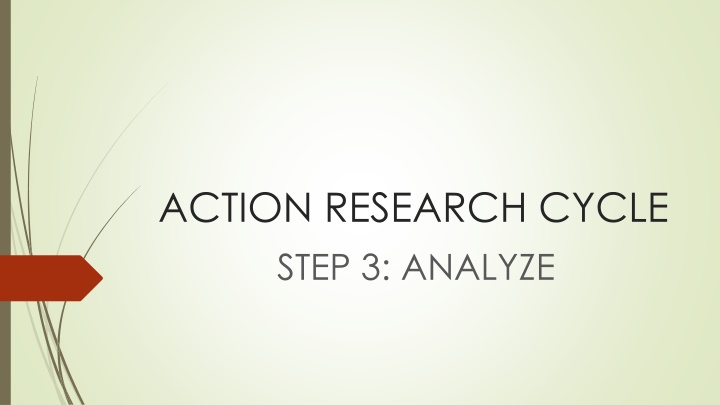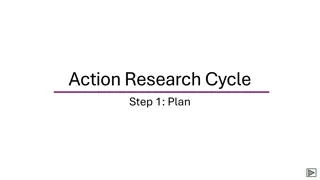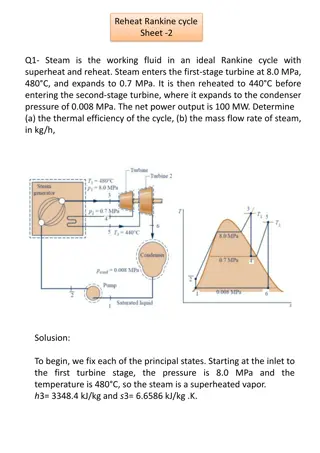Step 3 Analyze of Action Research Cycle
In the step 3 Analyze of the action research cycle, teachers systematically observe the effects of their actions by analyzing data. Analyzing data involves organizing and making sense of the collected information. This part delves into preparing data for analysis, coding data into specific categories, comparing data sets for similarities or differences, qualitative data analysis methods, and an example case study. Engaging activities are also included to enhance understanding of data analysis processes.
Download Presentation

Please find below an Image/Link to download the presentation.
The content on the website is provided AS IS for your information and personal use only. It may not be sold, licensed, or shared on other websites without obtaining consent from the author.If you encounter any issues during the download, it is possible that the publisher has removed the file from their server.
You are allowed to download the files provided on this website for personal or commercial use, subject to the condition that they are used lawfully. All files are the property of their respective owners.
The content on the website is provided AS IS for your information and personal use only. It may not be sold, licensed, or shared on other websites without obtaining consent from the author.
E N D
Presentation Transcript
ACTION RESEARCH CYCLE STEP 3: ANALYZE
Presentation Outline This part will provide the following information: The Step 4 Analyze of the action research cycle Qualitative data analysis Quantitative data analysis
Step 3-Analyze In the step 3 Analyze of action research cycle, teachers observe systematically the effects of the action by analyzing data. By analyzing data, you understand and make sense of data. When you analyze data, you have to organize and put your data in order.
Analyzing data When you analyze data Prepare your data for analysis by collecting Start going through your data and look for broad ideas, meanings, and trends that seem to answer your questions Then refine it by coding your data into more specific categories and groups. Categorize your data into numeric/quantitative and textual/qualitative data Once your coding is complete, compare the categories across your different sets of data (e.g. interviews compared with surveys) to see whether they express the similar ideas or there are differences.
Qualitative data analysis Qualitative data is gathered through qualitative data collection methods: field notes, research journals, conferences, interviews, and video & audio recordings, etc. Qualitative data are those that are analyzed without using numbers. When you analyze qualitative data: First, scan the data carefully several times and look for repeated items or themes to emerge in your data. Then, similar items or themes should be moved into groups or categories.
Analyzing data - Example Case: Andy, a teacher, wanted to know how her students view the teacher s role in the learning process. She analyzed the qualitative data collected through the interview method from her students. First level category: Views of good teachers Second level category: Positive views and Negative views Third level category: Positive roles of teacher, Positive behaviors of teacher, Positive skills of teacher
Analyzing data Activity 1: Read the research journal data which was recorded by Carmen, a teacher in the supplementary reading. Look at the table below presenting the possible qualitative/category analysis of Carmen s data.
Activity 2 Read the sample action research report-2 in the supplementary reading in Lesson 18 and think of the following questions. Report title: The social, emotional, and academic adjustment of an accelerated elementary student What data collection methods does the action report use? What categories and how many categories were emerged for the data collected according to the research question?
Correct answers to the questions 1. What data collection methods does the action research report use? The action research uses a checklist as a data collection method. Four teachers uses the checklist to observe the behavior of the 11-year old male student. 2. What are the initial categories for the data collected? The data collected was analyzed and organized into two categories: 1) Writing and 2) Social and emotional adjustment
Quantitative data analysis Quantitative data is gathered through quantitative data collection methods: Checklists, Rubrics, Surveys, teacher-made Tests/Quiz, Standardized tests, Attitude and rating scales Quantitative data are those that are analyzed with using numbers. Quantitative analysis in action research is used: 1. to gain a concise numerical picture of the issues; 2. to characterize or describe a set of numbers; 3. to show numbers in terms of averages, frequencies, percentages
Display of quantitative results/findings A number of choices are available for presenting quantitative data. The most popular methods are tables, graphs, bar charts and pie charts. Example of a Bar chart Example of a Pie chart
Display of quantitative results/findings Example of a Line chart Example of a Table
References Read about data analysis in the supplementary readings. Burns, A. (2010). Doing Action Research in Language Teaching: A Guide for Practitioners. NY: Routledge. Johnson, A. (2012). A short guide to action research (4th ed.). Allyn and Bacon.
THANK YOU FOR YOUR ATTENTION























